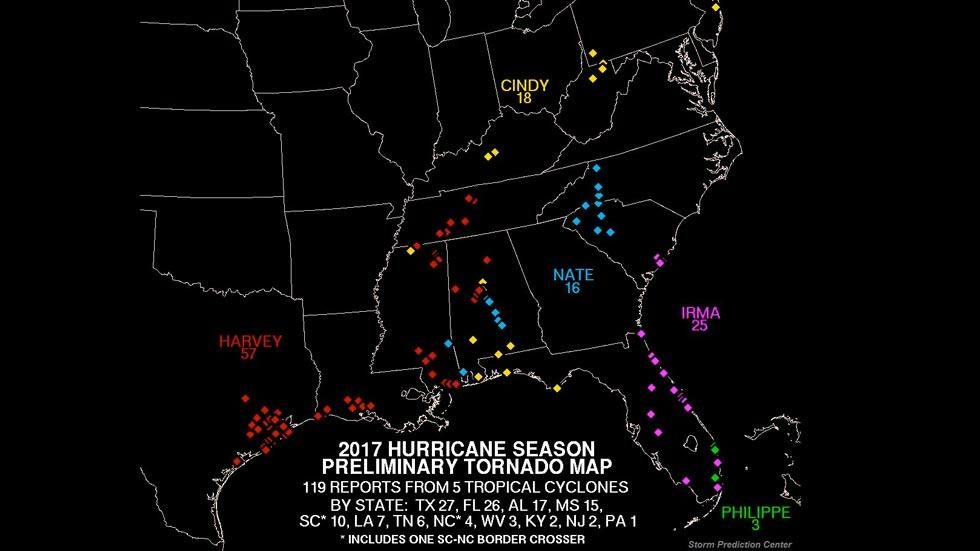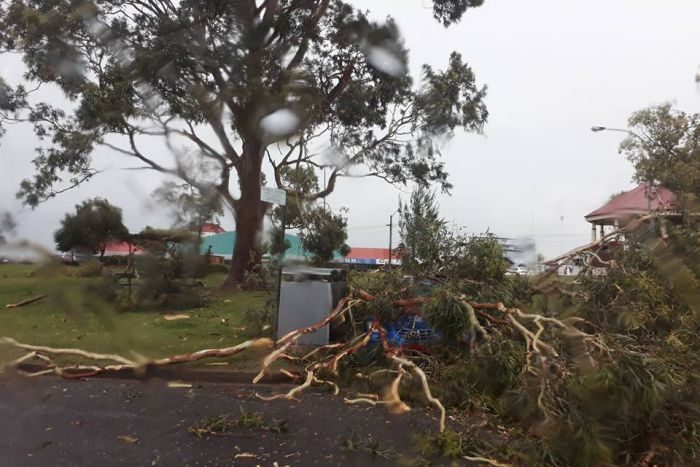
© NOAA Storm Prediction CenterPlotted on the map are the tornadoes associated with the hurricanes and tropical storms that affected the U.S. in 2017.
Five tropical cyclones were responsible for
119 reports of tornadoes in a dozen states, according to preliminary data provided by NOAA's Storm Prediction Center (SPC). This includes two tropical storms (Cindy and Philippe) and three hurricanes (Harvey, Irma and Nate).
Although Emily made landfall in Florida, and Jose and Maria brushed parts of the East Coast, there were no reported tornadoes from those three systems.
Hurricane Harvey had the largest number of tornado reports with 57, mostly clustered near the southeastern Texas coast, where devastating flooding occurred in the Houston metro area. Tornadoes were also spawned by Harvey as it weakened to a tropical storm and a tropical depression in Louisiana, Mississippi, Alabama and Tennessee.
Harvey's tornado reports account for 48 percent of the total 119 for all five tropical storms and hurricanes. Irma (25), Cindy (18), Nate (16) and Philippe (3) round out the other 52 percent of the reports.
When examined on a state level, Texas and Florida were neck-and-neck with 27 and 26 tornado reports, respectively. The main difference between those states is that Florida saw its tornado reports from three separate tropical cyclones (Cindy, Irma and Philippe), while all reports in Texas came solely from Harvey.



Comment: See also: Study: Tornado outbreaks are increasing - but scientists don't understand why. A coauthor of this paper states "What's pushing this rise in extreme outbreaks is far from obvious in the present state of climate science."
Recently other climate scientists were saying hurricane Harvey "should serve as a warning", as they continue to push the man-made climate change/global warming lie. They are not considering the importance of atmospheric dust loading and the winning Electric Universe model in their research. Such information and much more, are explained in the book Earth Changes and the Human Cosmic Connection by Pierre Lescaudron and Laura Knight-Jadczyk. Increasing cometary and volcanic dust loading of the atmosphere (one indicator is the intensification of noctilucent clouds we are witnessing) is accentuating electric charge build-up, whereby we can expect to observe more extreme weather and planetary upheaval as well as awesome light shows and other related mysterious phenomena.